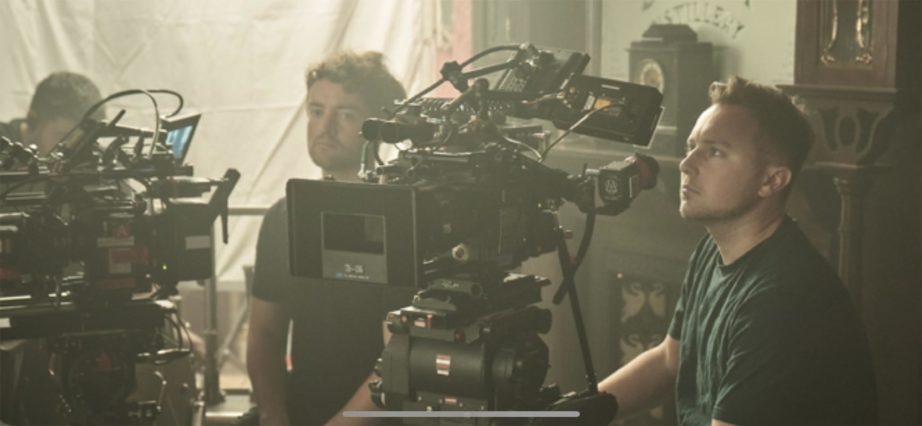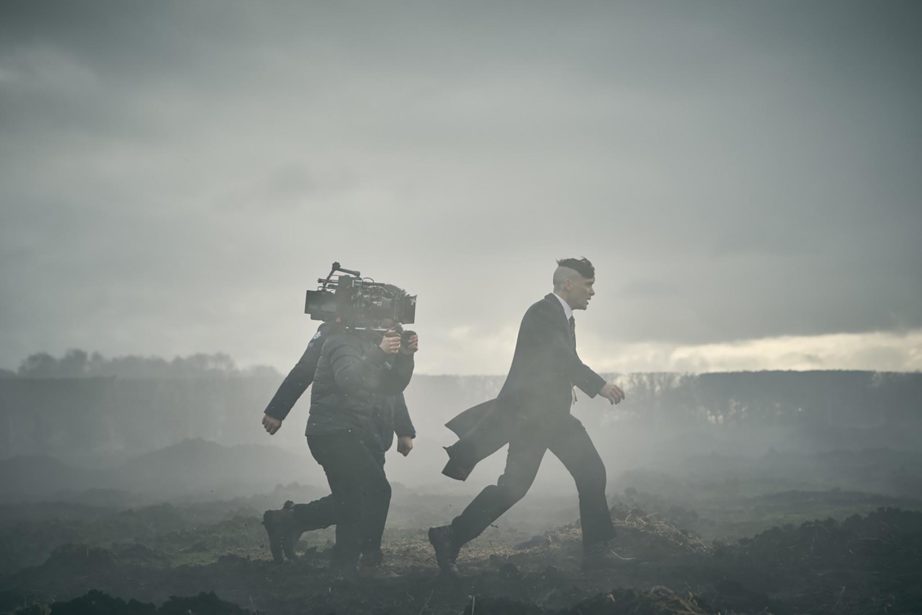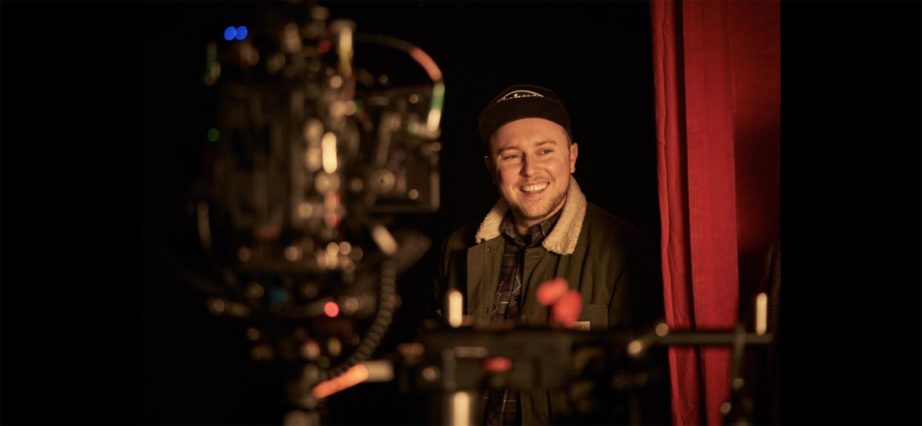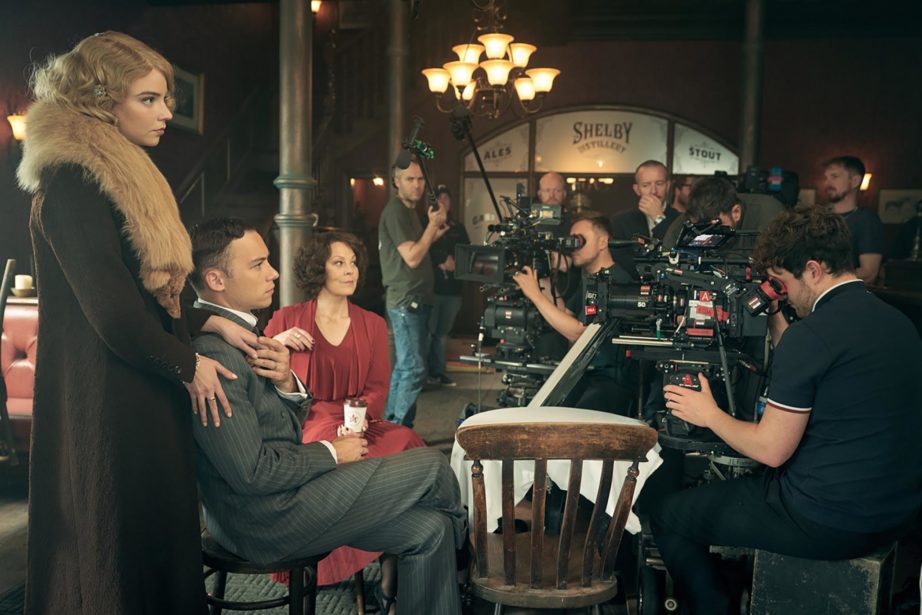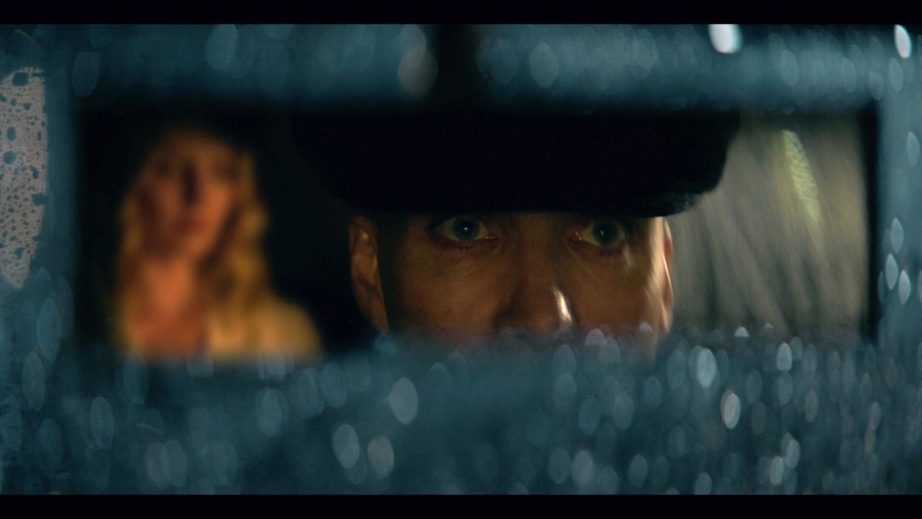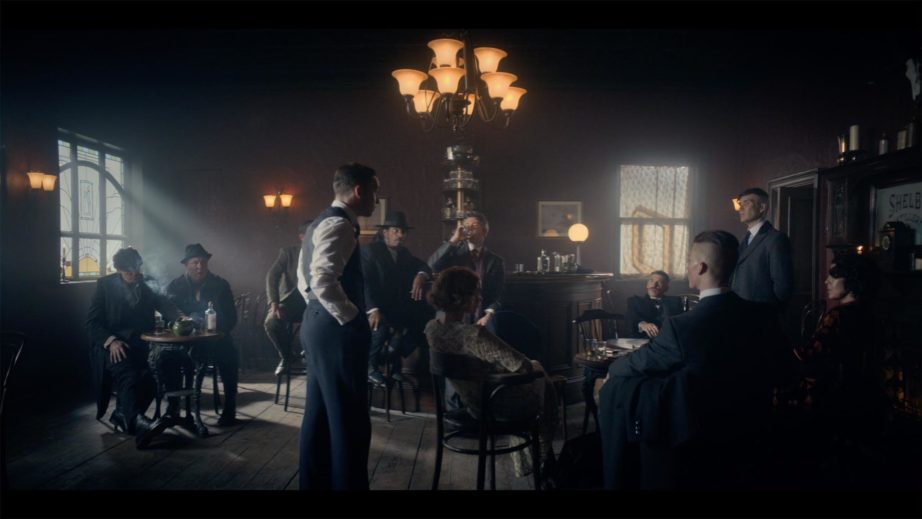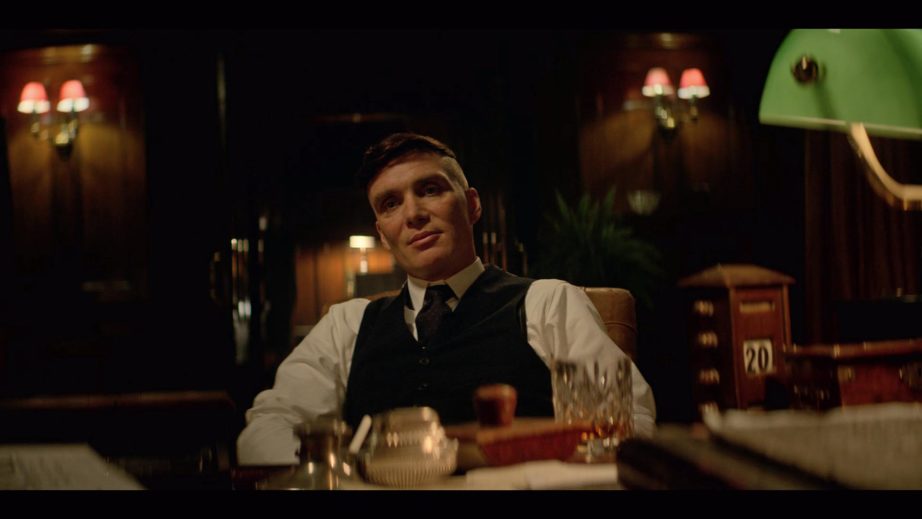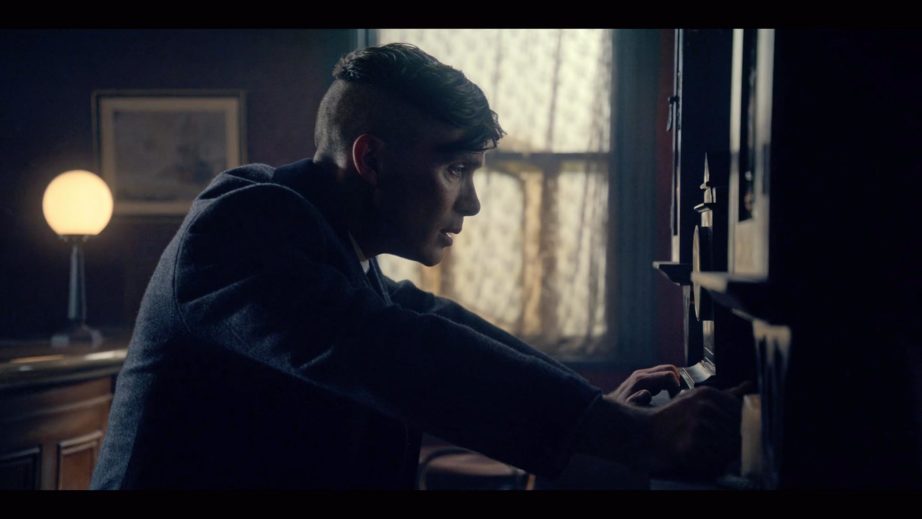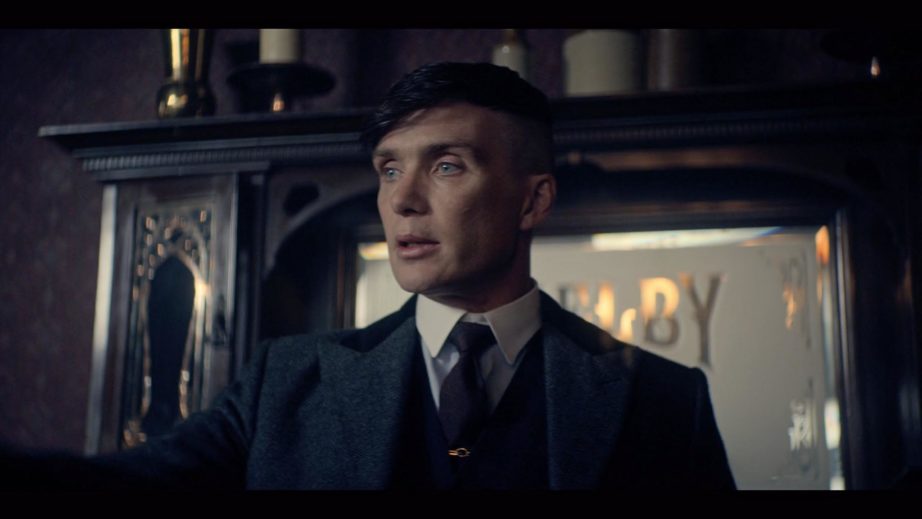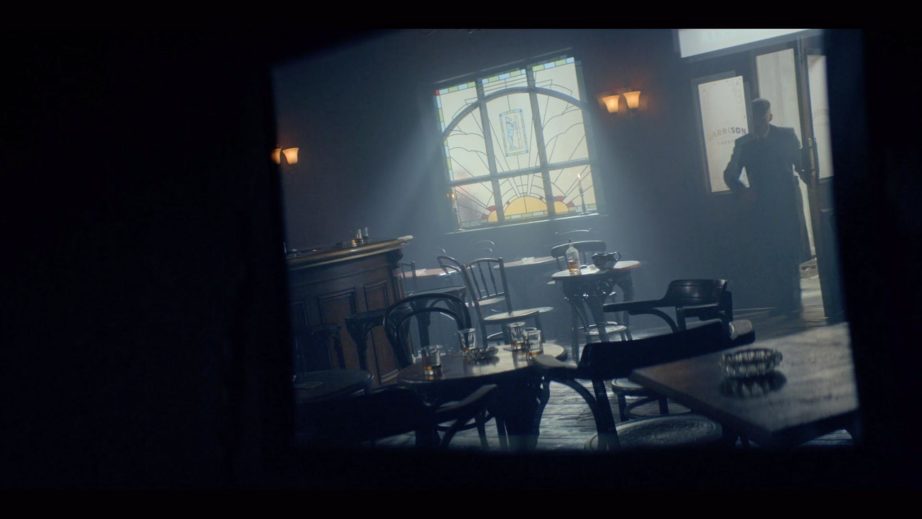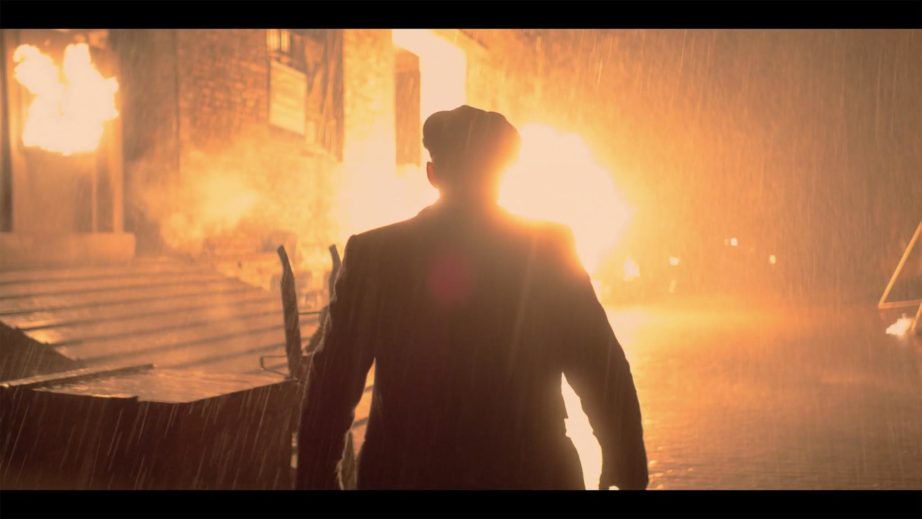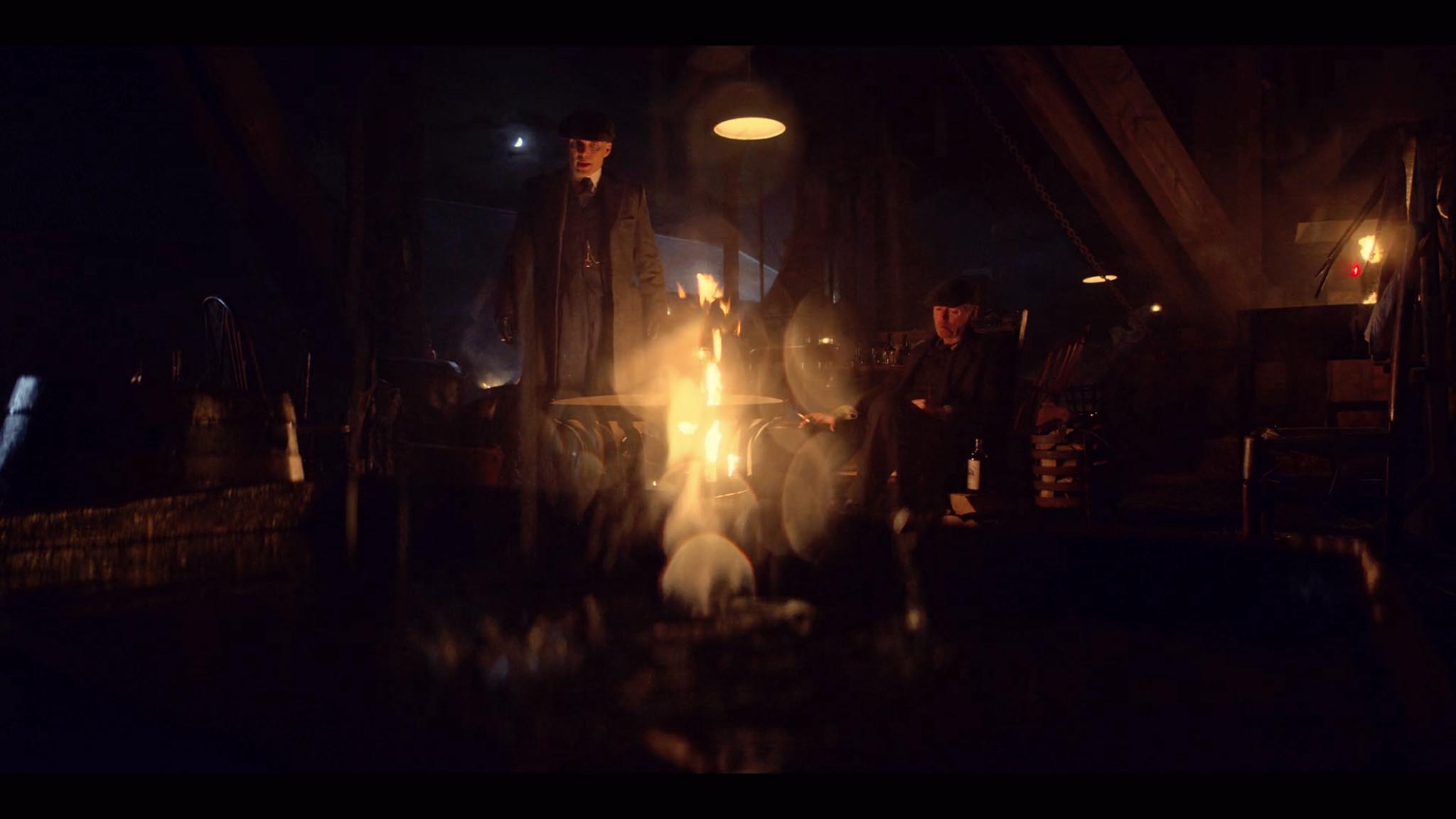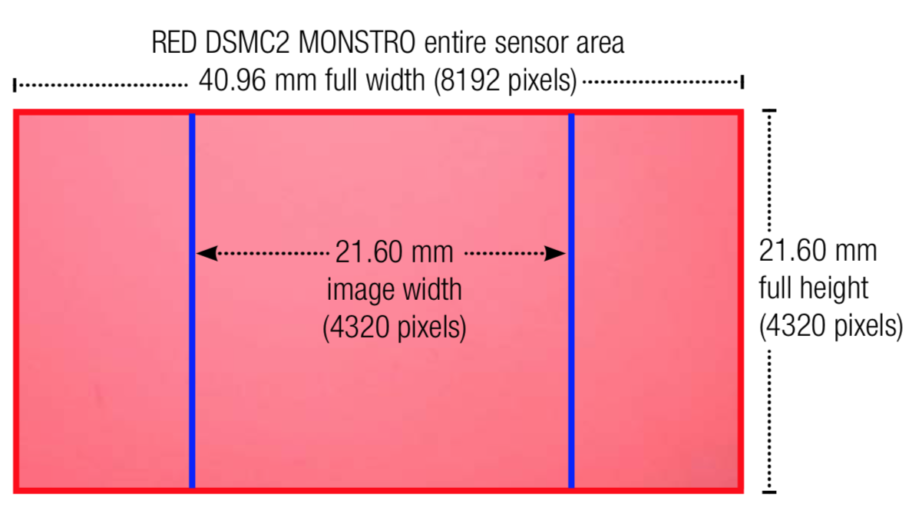Peaky Blinders is a BBC television crime drama series set in Birmingham, England after World War I. The fifth season began airing in September on BBC One and, for Netflix Subscribers outside the UK, in October 2019. Director Anthony Byrne and cinematographer Si Bell (above, right) worked with RED DSMC2 MONSTRO 8K VV cameras and Cooke 2x squeeze Anamorphic/i lenses.
JON FAUER: Why did you go from spherical to anamorphic?
SI BELL: Going anamorphic for the new season made absolute sense. There’s a time jump between the fourth and fifth seasons, with a new storyline for the Shelby family, so a new look was reasonable and it made the series look more cinematic.
Why Cooke Anamorphic/i 2x lenses?
We decided on the Cookes as they had a great look that wasn’t too far away from the normal spherical look that Peaky is normally known for, but with a slightly less in-your-face anamorphic look. I was excited to give Peaky an anamorphic feel, and the Cooke Super35 format 2x squeeze Anamorphic/i lenses, with their subtle bokeh and no big anamorphic flares, gave it that look. It was a cleaner look, not extreme. We needed and got a softer, more naturalistic style that didn’t make a statement that we were changing the look of the show.
We wanted an anamorphic cinematic look with the ability to shoot fast, but the lenses also had to be very reliable through varied environmental conditions and have good accuracy for the focus pullers. That may seem like a lot to ask, but the Anamorphic/i just stood out from the rest.
What focal lengths did you have? What were your favorites?
Cooke Anamorphic/i 25, 32, 40, 50, 65 Macro, 75, 100 and 135 mm. The 40mm was a real workhorse for handheld and establishing shots. The 65 Macro was the go-to lens for getting really close to the actors and to pull focus from the background for developing shots, etc.
Why RED DSMC2 MONSTRO?
I thought that the RED MONSTRO 8K sensor had the best look for the project, with the right combination of flexibility, sensitivity and physical size. I loved using the RED MONSTRO. We worked with it a lot on the ARRI Trinity Rig, so we needed a small camera. The image quality was amazing with its massive dynamic range and high resolution. The skin tones were natural and I really liked the sensor’s look. We also needed a true 4K camera for Netflix release [with anamorphic lenses].
So, if your were shooting with Super 35mm format lenses, why did you need a Full-Format RED MONSTRO 8K VV?
We used the MONSTRO instead of the HELIUM because it had a cleaner look in low light scenes.
But the most important reason was because we shot in 4K 2:1 aspect ratio with Cooke Anamorphic 2x squeeze lenses. This allowed us to take advantage of the MONSTRO 8K VV sensor’s full 21.60 mm height. Therefore, we get a larger image area compared to the HELIUM’s 15.77 mm sensor height.
Aspect ratio and sensor area / sensor mode?
RED DSMC2 MONSTRO 4K 1:1 4320 x 4320 Format desqueezes to a 2:1 aspect ratio release.
Cropped in post or in camera?
Desqueezed in post to 2:1. No cropping is necessary in post with RED DSMC2 MONSTRO. (The squeezed picture area is windowed within the sensor. Of course, the R3D file itself is squeezed, so it has to be desqueezed in post, but not cropped.)
Describe look achieved with the anamorphics? Compared to spherical and vintage lenses. And did you use any filters?
It’s a more subtle anamorphic look. We didn’t want too many flares and artifacts that you would get with vintage glass.
Tiffen 1/4 Black Satin.
Rented from where?
From Picture Canning, a company I’ve worked with a number of years and who have helped me a lot as my career has progressed.
How did your career progress and begin? Film school?
I went to university and took film production courses where I got to make a few small drama projects and try different roles. I thought camera was for me so I started working in the camera team on British TV dramas, then feature films, first as a camera trainee then a loader. I learned a lot from those days working with lots of different cinematographers. I was always shooting shorts and they gradually got slightly bigger budgets.
I moved to working as a cinematographer doing small independent features and small commercials. I did that for a number of years, trying to build a reel, a name, and just shoot as much as I could. There were a few hard years. But I stuck at it and eventually got a feature film backed the BFI and that gave me a step up when it was released. After that I got my first TV drama and went from there.
2:1 Aspect Ratio MONSTRO Math
with S35 Cooke Anamorphic/i
4K 1:1 4320 x 4320 RED DSMC2 MONSTRO Format
using S35 Cooke Anamorphic/i with 2x Squeeze for a 2:1 aspect ratio release
The entire sensor area of RED DSMC2 MONSTRO is
40.96 x 21.60 mm Ø 46.31 mm
with 8192 x 4320 sensor photosites.
The math for 2:1 aspect ratio release is
(2÷1) aspect ratio ÷ 2x squeeze = 1
and then, 1 x 21.60mm (image height) = 21.60mm (image width)
So:
21.60 x 21.60 mm is a 1:1 picture area when squeezed
with an image diagnonal of Ø 30.55 mm
and 4320 x 4320 sensor photosites
MONSTRO Full Height with Cooke Anamorphic S35
Even though the Cooke Anamorphic /i lenses were designed for Super35 format, not Full-Frame, they fill the full height of the RED DSMC2 MONSTRO (8K VV) sensor. That is because the Cooke Anamorphic /i lenses have a 33.54mm image circle, which is larger than other Super35 format anamorphic lenses.
Peaky Blinders is released in a 2:1 aspect ratio, common to many Netflix and other recent shows, instead of widescreen 2.39:1. Actually, long before Netflix, this was Storaro’s cherished format, Univisum 2:1.
To determine the sensor’s picture area for a 2:1 release with 2x anamorphics, you can look it up on page 119 of the DSMC MONSTRO Operation Guide. It is listed on the line for 4K 1:1 Format.
Or you can do the math. The formulas are shown above and explained as follows.
Divide 2 by 1 (the aspect ratio) by 2 (the 2x anamorphic squeeze factor), and you get 1.
Then multiply 1 by 21.60mm (image height) to get the image width of 21.60mm.
Therefore, your image area on the sensor has an aspect ratio of 1:1 after being squeezed. If this were a film gate, that would be it. The image diagonal is 30.55 mm.
Now, the entire RED MONSTRO 8K VV sensor has 8192 × 4320 photosites. Since we want to work with full picture height, multiply 4320 x 1 to get 4320 photosites for picture width.
How nice. 4320 x 4320 resolution is more than 4K resolution in both horizontal and vertical. Cooke S35 Anamorphic/i 2x lenses conveniently cover RED DSMC2 MONSTRO full sensor height for 2:1 release.


